Kate Meadows's Blog, page 6
January 7, 2020
What’s your “RE” Word?
What’s
Your “RE” Word?
It’s
no accident that lots of words beginning with “RE” accompany the turnover of a
new year. Renew. Revisit. Refocus. Refresh. Revise. Restart. Resolve.
Do
you have a “RE” word for 2020?
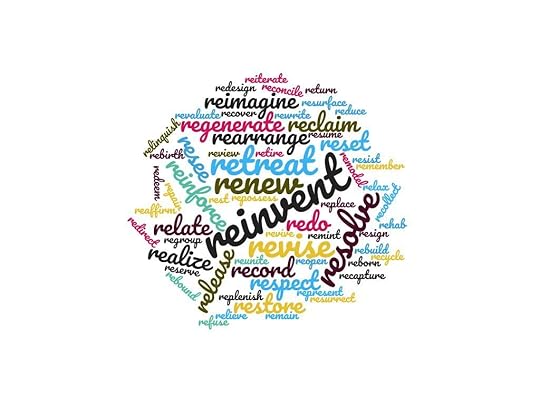
My
family moved to Rapid City, SD, last summer. It was, in a major way, a new
start. New job for my husband, new role for me as a business owner, new school
for our kids. New house, new community, new people.
In The Magic of Transition, I wrote about how our lives are in a constant state of transition. Some transitions are easy; others are hard.
The
New Year is a natural transition point. As the calendar resets to Month 1 of a
new year, we also take the time to REset.
As
a writer and writing workshop instructor, I see the New Year as a magical time
to spark motivation in other creative people. I am excited to offer a slew of
opportunities for writers and aspiring writers this year with Kate Meadows
Writing & Editing!
Introductory meeting for a new local writers group (Rapid City, SD)
WHEN: JAN 8, 6-7 P.M. (beginning writers) and 7-8 P.M. (intermediate/experienced writers)
WHERE: Books-A-Million (2130 Haines Ave, Rapid City, SD 57701)
White Tail Ridge Writers Retreat – an afternoon focused on new or renewed writing goals
WHEN: JAN 18, 1-4 p.m.
WHERE: White Tail Ridge B & B (24674 Whitetail Ridge Rd, Hermosa, SD 57744)
Only 6 spots left! Register here
Business Writing 101 – breaking down the basics of good business writing: why it matters (no matter what profession you’re in), common writing blunders & how to avoid them, organization & tone
WHEN: JAN 29, 2020, 6-7:30 p.m.
WHERE: Keller Williams (2401 W. Main St., Rapid City, SD 57702)
For more information or to reserve a spot, email kate@katemeadows.com
Kendall Valley Writers Retreat – a three-day summer writing getaway in the sweeping Rockies, at the base of the Wind River and Gros Ventres mountain ranges
WHEN: June 19-21, 2020
WHERE: Kendall Valley Lodge, Cora, WY
More information and reserve your spot here
Writing is lonely work much of the time. Community is crucial! To that end, I am also in the process of launching the Writers Group Network, a hub where writers can connect with other writers according to geographical area, goals and/or genre. I have a huge heart for writers groups, because as writers, we need to be in community with creative people.
Yet not all writers groups are created equal. Maybe you crave a community that provides regular writing prompts and opportunities to generate new work. Or perhaps you seek a safe space where you can receive respectful but honest feedback on your work-in-progress. Whatever you’re looking for in a writers community, I invite you to begin the connection process by taking a brief survey, here.
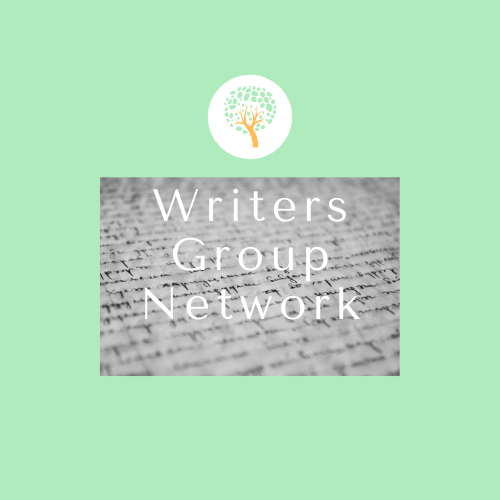
I
invite you to create more and create better with me in this new year. Be a part
of something bigger than yourself.
Our
language is full of “re” words. What’s yours for 2020? Share it in the
comments, or drop me an email at kate@katemeadows.com.
I would love to hear from you!
December 11, 2019
The Case for Community Newspapers
How do you stay informed about what’s happening in the
world? How do you stay informed about what’s going on in your community? Where
do you get your news these days?
These are critical questions I’m passionate about pursuing,
because, as we all know, the state of news in our country is changing
dramatically. Strong labels come with just about every national news source –
CNN, FOX, NBC, MSNBC. And when was the last time you heard someone praise their
local newspaper?
News on the national front is more polarized than ever. News
on the local front is disappearing. That, to me, is scary.
In an article earlier this year, the Wall Street Journal reported that nearly 1,800 newspapers closed between 2004 and 2018. Collectively, the closures left 200 counties without newspapers.
The Bureau of Labor Statistics reported that newspaper jobs declined by 60 percent between 1990 and 2016. Newsroom employees – the people who actually report the news – declined by 45 percent between 2008 and 2017, a Pew study found. Yet another Pew study found that 71% of Americans believed local news outlets were doing well financially, though only 14% actually paid for local news.
These stark numbers beg the question: What value does our
society place on local news?
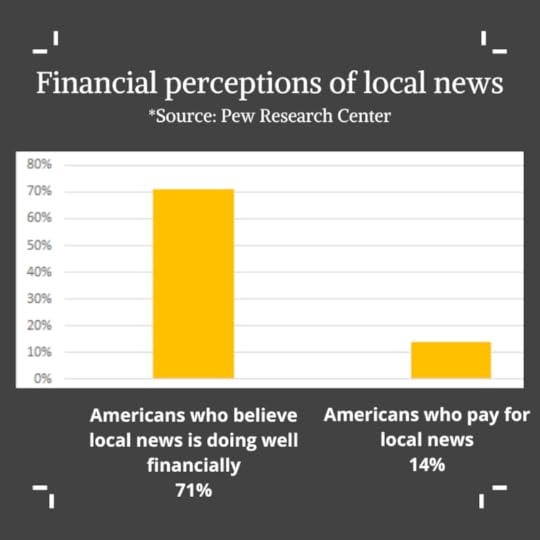
When a literary magazine I love announced it was seeking
essays on hometown newspapers for a new anthology entitled INK, I shoved
everything on my to-do list aside and started writing. The topic, to me, was
too important to ignore. My relationship with community journalism started when
I was a freshman in high school, because the editor of my hometown newspaper – The
Pinedale Roundup – gave me a chance.
The Pinedale Roundup is a 115-year-old community icon
for Pinedale, WY, and Sublette County, the least populated county in the state.
When John F. Patterson was doggedly trying to establish a town on the banks of
Pine Creek in southwest Wyoming’s high and rugged terrain, he envisioned a
newspaper as a critical component to defining a town. A newspaper could connect
people who were trying to make a go at life in this hardscrabble place. It
could also showcase the land and its opportunities for citizens and newcomers
to make it their home.
A glance through the early issues is a wild ride of
entertainment. As I report in my forthcoming essay for INK:
The news was divided by area: Merna (“Supt. Anderson of the Forest Reserves has been seen in these parts lately”); Big Piney (“All are pleased with the abundant hay crop this year”); Valley Roundup (“P.V. Sommers passed thru [sic] Pinedale recently en route to Pacific Spring, where he expects to recover some of the horses stolen from his camp near the Black Butte during July … Mr. Fred S. Boyce, who has been on the sick list for some time the past summer is again on duty, rather thin and pale but still in the ring”). In the Cora section, Brandon [the Roundup’s first editor] mused: “A friend of mine asked me the other day the name of the joint on the left hindleg of a cat, the joint the cat usually sits on. I was unable to reply. Will some kind reader inform the editor so I may know in the future.”
The news wasn’t earth-shattering. It wasn’t sensational. It
was simple, unfussy and conversational. But it served a definite purpose: to
connect people with one another, and to connect people with the place they
called home.
Since then, the flavor of community news has evolved
dramatically, not only in focus of what constitutes news, but also the way
people consume news. The digital landscape, accented by noisy social media
platforms, has hugely influenced the way people get their news. It has also
upended advertisers’ approaches to reach consumers. Advertisers want to be
where their consumers are. If their consumers’ eyes are not on the local newspaper,
big advertising dollars won’t be, either.
These colossal changes, as most of us know, have also wildly affected newsrooms across the country. One example of many is the Omaha World-Herald, which has let go of one-third of its newspaper staff within the past two years. MarketWatch columnist Brett Arends writes:
Gutting papers and laying off reporters is a lot easier these days. Not just because of the economy, but also because of a very successful 50-year cultural campaign against “the media,” who are portrayed as evil “elitists” (and the enemy, of course, of the American people).
As the local news landscape shrinks, Americans are provided with
less and less information about what’s happening close to them, reports the
Wall Street Journal. Local newspapers are vanishing in part because they
struggle to find sustainable ways to deliver quality news to their readerships
while still making enough money to pay their staff and cover overhead costs. Turnover
is as common as cracks in a sidewalk. The reporters who fill the vacancies
often have no personal connection to the people or places on which they are
reporting. They are willing to work for wages that hardly rival an entry-level
position. Readers’ faith in the stories declines, because the stories lack
quality, depth, solid reporting. The greater public loses trust in the fickle
voice of its community.
So what happens to a community when its newspaper loses
credibility, respect, community backing? Where is the pulse of a town if not in
stories that are communicated thoroughly to the wider public?
As I worked on my essay about my own 115-year-old hometown
newspaper (which, by the way, still comes out weekly but at half the size as it
was in its heyday and with enough punctuation and grammatical errors to make
Strunk and White turn green), a looming question nagged at me:
What is news?
A second question piggybacked it:
What is the purpose of a newspaper?
Is the answer different today than it was back in 1904, or
1940?
One purpose of a newspaper is to ask – then answer –
questions. A good reporter is not afraid to ask questions. She starts with the
questions everyone is asking. But then, she goes deeper. She asks more
questions, and she picks up answers like breadcrumbs, following a trail to the
story beneath the surface.
In an interview with Lapham’s Quarterly Review, former editor-in-chief of The Guardian, Alan Rusbridger, acknowledged that advertising and news are floating apart. “If that’s true, and if society still needs anchor news and people who can say, ‘That’s true,’ ‘That’s not true,’ then we have to think about news as a public service like an ambulance service or a police service. And how we answer is question we ought to start discussing.”
Indeed, Arthur Miller, the American playwright and essayist
of Death of a Salesman and The Crucible fame, defined a newspaper
this way: “A good newspaper, I suppose, is a nation talking to itself.”
Drill that down to the local level, and you get something
like this: “A good newspaper, I suppose, is a community talking to itself.”
But what are conversations – good, thorough, responsibly
researched conversations – worth to you, reader?
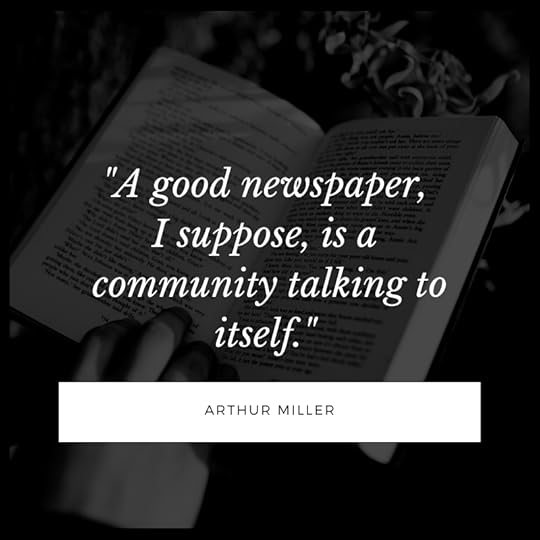
What conversations is your community engaged in? What are
you, as a local citizen, curious about? As a member of a specific community, what
do you need to know?
The broader question remains for all of us, writes Brett
Arends: If local reporters don’t cover the local courts, and City Hall, and
zoning board meetings, and the goings-on of the local chamber of commerce, who
will?
It’s time we start thinking about local news as a civic
need. Places and people will continue to change, and history will continue its
slow and steady march, regardless of whether people write about it. But stories
are the lifeblood of any community. Without stories, we die.
The future of local news is hanging in the balance. A future
without newspapers, says Nicco Mele of the Shorenstein Center, is “actually a
crisis for democracy.”
How does a community talk to itself? What is the value of
one community’s heartbeat?
Let’s start talking.
November 12, 2019
How to Build a Writing Routine and Stick to It
The hardest part about writing is, well, writing. I
mean, the actual work of setting everything else aside – the laundry, the
dishes, bills, time with others – and putting your butt in a chair and writing.
If you are a writer, you have ambitions. You have ideas, lots of them. Your
creative well is probably bubbling over with all of the possibilities you could
write about, chapters for your novel-in-progress, you name it.
But the very act of sitting down and writing is hard. Writing
is so often an elusive act. It is very easy to do anything BUT write. Why?
What
holds us back from putting our butts in the chair and writing?
The roadblocks
I ask this question to writers in my writing workshops often –
what holds us back from doing the actual work of writing? You can probably
guess the most common responses.
Fear of failure. To avoid the risk of
failure, you simply don’t start. If you don’t start, you have nothing to fail
at. So often ideas present themselves so neatly packaged in our heads. When we
start trying to explore those ideas on the page, that pretty little package
starts to unravel. The idea as a whole seems perfect – and worth pursuing – in
our minds. But when the creative process takes over, watch out!
Distractions. There is always, always
something else to do. There will always be something else to do. My husband’s
family coined a term for my mother-in-law, who was never quite ready to leave
the house for school, for church, for vacation. Always, she had the case of
“first, I gotta …” You might think, I will start writing, but first I gotta
put away the dishes. Or, I will start writing, but first I gotta call my
mom. Distractions are sneaky. They often present themselves as absolutely
necessary when they absolutely aren’t. The dishes will still be there when
you’re finished writing. Your mom is (hopefully) not going anywhere.
Lack of intention. Which of
these scenarios are you more apt to show up for? 1) I’m going to work on my
novel. Or 2) I’m going to write 1,000 words on my novel. Setting
clear goals for each writing session gives you something concrete to
work toward. The stakes are higher if you failed to meet your specific writing
goal of the day than if you simply failed to write today.
Insecurity. We all have it: I’m not
good/smart/creative/fill-in-the-blank enough. If you bow to it, it will win
you over, every time.
An Orchestra of Ghosts
Every single one of us is vulnerable to these roadblocks. In her pep talk for this year’s National Novel Writing Month event, Anne Lamott tells us, “Writing is hard. I would personally rather do almost anything, but by the same token, nothing fills me with more relief and gratitude for having gotten that day’s work done.”
Writing is hard, no matter who you are – Anne Lamott or Jane
Doe. In her book, Where the Past Begins, Amy Tan writes: “Despite
my fluidity in conjuring up imagery, writing the actual narrative is a
laborious and confounding experience tantamount to conducting an orchestra of
ghosts or being the caterer for a wedding reception full of thieves and
drunks.”
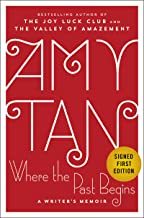
So how do you show up for this hard work, time and time again?
The only way to finish a novel, essay, poem – you name it – is to actually sit
down and write. Not once, but over and over again. Every day, you have
to conquer the roadblocks. Just because you blow past them one day doesn’t mean
they won’t be there the next. Writing is a discipline, and that devilsh voice
that tries to keep you from it rarely sleeps.
Here are 4 ways to build a writing routine and stick to it:
Establish a ritual. Ritual invites predictability, a sense of ownership and even control. A ritual gives you a signal that it’s time to concentrate. Do it enough times and follow through, and you’ll start to believe in the power of the moments before you, because hey, you’ve been here before.
Your muse might be your friend, but it is an unreliable friend. To nurture a sustainable writing routine, you have to be the boss of your muse, not the other way around.
“You
tell your inspiration when to show up,” writer Allison Williams says.
Poet Craig Morgan Teicher says that “waiting to write until one is inspired is like waiting to have a drink of water until it rains.”
Somerset
Maugham famously said he only writes when inspiration strikes. “Fortunately, it
strikes every morning at 9 o’clock sharp,” he said.
Doing
the work builds confidence. “Nobody says, ‘I’m going to wait to go to the gym
until I get stronger,’” Williams points out.
Instead,
you go to the gym to get stronger.
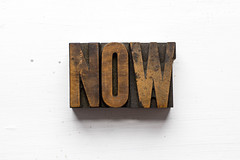
The
same is true of writing. You write to grow as a writer. Repetition builds
response. Ritual teaches your brain that NOW is the time to write. You train
your brain to go until you say stop.
Work
during your strongest point of the day. If writing is important to you, you want to do it
when you are at your strongest mentally. I know my best time of day is first
thing in the morning. That’s when I am at my best. So, it would make sense to
reserve the first hours of each morning to write, if writing is indeed the most
important thing.
Barbara Kingsolver gets up at 4 a.m. most days “because my head is too full of words, and I just need to get to my desk and start dumping them into a file,” she says.
Michael
Chabon writes from 10 p.m. until 3 a.m., five nights a week.
What
is your strongest point of the day? How can you arrange your schedule so that
writing occupies that most valued pocket of time?
Surround yourself with your favorite things. “The biggest aid to regular production is working in a serene atmosphere,” Stephen King says in his book, On Writing: A Memoir of the Craft. “It’s difficult for even the most naturally productive writer to work in an environment where alarms and excursions are the rule rather than the exception.”
Amy Tan has to have music in the background when she writes. I have to have total silence, and I prefer lots of natural light. My friend and fellow writer Dawn Wink built a writing corner for herself, filled with things that nurture her creativity and spark inspiration, including a quote wall, paper lanterns and candles. In the mornings, she writes by candlelight.

“Sky5” is licensed under CC BY 3.0
Music.
Silence. Light. Inspirational quotes. What is that “thing” for you?
Find
an accountability partner. In
graduate school for my MFA, I met another writer whose work I loved. Not only
that, I loved who she was – her personality, her sense of adventure, the
way she was so honest and candid about her struggles. We stayed in touch after
graduate school as friends, but also because we knew we needed each other as writers.
Outside of the structured walls of academia, we needed someone to help keep us and
our creative ambitions on track.
We
wrote weekly emails to each other documenting our writing process and short
term and long term goals. We sent works in progress to each other for critique.
An
accountability partner is an indispensable resource, both for motivation to
show up and for impetus to get things done. You know that if you don’t show up
for your writing, you are not only letting yourself down; you’re letting down
your partner, as well. Being accountable to someone other than yourself gives
you more drive to put tasks in motion.
So, what’s next?
“You start now, as is,” says Lamott. “Describe one small piece of it for us, now, today, the best you can.”
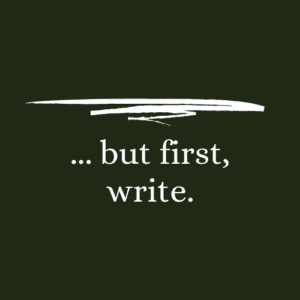
I’ve
spent a lot of time thinking about how to overcome hurdles as a creative
professional. Writing is elusive, if you let it be. But if you nix the
excuses, drill into what makes you tick and capitalize on your strengths whenever
and wherever you can, you’ll be surprised at the work you can hammer out,
day-by-day.
For a little extra motivation, head over to my Workshops, Etc. page, for a t-shirt or sticker that reminds you to put your writing first always. Everything else will still be there when you’re done.
But
first, WRITE.
October 22, 2019
9 Fun Facts about National Novel Writing Month (NaNoWriMo)
Somerset Maugham supposedly gave
this answer to the question of whether he writes on a schedule or only when he
is struck by inspiration: “I write only when inspiration strikes. Fortunately
it strikes every morning at nine o’clock sharp.”
November is right around the
corner, and for many writers, that means the enticing challenge of National
Novel Writing Month, or NaNoWriMo. NaNoWriMo markets itself as a “wildly
ambitious writing event,” and it is. To complete the challenge of writing a
50,000-word novel in 30 days, you have to have guts, energy and a strong,
enduring supply of motivation. The organizers behind NaNoWriMo make one thing
clear: The goal is not to complete a polished novel. It’s to hammer out a first
draft.

The difference between a first
draft and a final draft is huge. NaNoWriMo is meant to be the flurry of
creativity, the skeleton set-up of a long-term project. You take an idea and
run with it. You write with abandon. NaNoWriMo will probably not turn you into
the next bestselling author (though it does for a very select few). But that
was never its intention, anyway. This national movement started 20 years ago as
a simple challenge among 21 writers in the San Francisco Bay area: Start and
finish a novel in 30 days. It was the quantity, not the quality, of words that
mattered.
“I have a history of dragging friends into questionable endeavors,” founder Chris Baty told David Henry Sterry for the Huffington Post.
Plenty of naysayers caution writers against embarking on this month-long challenge each year. Lack of focus on strong writing is one reason. Some agents and editors have come to dread NaNoWriMo submissions, because the work they receive is unpolished and therefore wastes their time.
But if you want to buck the
excuses, chisel out a writing routine and cement a discipline of writing into
your daily grind once and for all, NaNoWriMo could be your best friend.
To me, NaNoWriMo is not about a
finished product; it’s about implementing a sustainable writing routine and showing
up for that routine every day.
Here are 9 fun facts about
National Novel Writing Month:

To complete a 50,000-word work-in-progress within 30 days, you should plan to write an average of 1,667 words per day.Since its founding in 1999, NaNoWriMo has become a nationally recognized nonprofit that supports writing fluency and education.More than 900 volunteers across the world coordinate writing sessions in libraries, coffee shops and elsewhere.You set your own writing schedule. When you sign up (it’s free), you can download the complete NaNo Prep 101 Handbook. The handbook includes lessons for how to develop a story idea, how to create complex characters, how to organize your life for writing, finding and managing time to write and more. You can even take the “What’s the best writing schedule for you?” quiz.If you’re participating, you’re a “Wrimo.”Sara Gruen’s Water for Elephants, a New York Times bestseller in 2006 and 2007, started as a NaNoWriMo project.In its first year, 1999, NaNoWriMo had 21 participants. Twenty years later, participants number over 300,000.In 2004, NaNoWriMo launched a young writers program. This program encourages kids from Kindergarten through 12th grade to write a pre-determined number of words in 30 days, as set by their teachers. The program includes lesson plans, writing ideas and resources. During its first year, 4,000 students in 150 classrooms participated. By 2017, more than 100,000 students in 9,000+ classrooms took on the challenge. You “win” if you finish. That means you upload your entire work-in-progress to Nano’s word counter platform in the final days of November. If the word counter detects 50,000 words or more, you are declared a winner. Here’s a look at the finishers over the past two decades:
1999 – 21 participants, 6 winners2000 – 140 participants, 29 winners2001 – 5,000 participants, 700 winners2002 – 13,500 participants, 2,100 winners2010 – 200,500 participants, 37,500 winners2015 – 431,626 participants, 40,000+ winners2018 – 287,324 participants, 35,387 winners
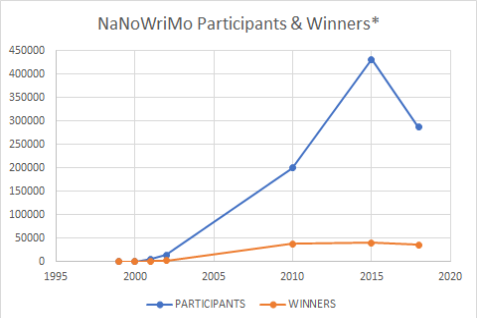 *Sources: Wikiwrimo.org & Nanowrimo.org
*Sources: Wikiwrimo.org & Nanowrimo.orgOne of the keystones to NaNoWriMo’s
success is its focus on community.
“… somehow lowering our
expectations and transforming novel-writing into a group activity — most of us
got together after work to write — ended up doing good things to our brains and
books,” Baty told the Huffington Post. “If you want to get more writing done,
try working in the same room with other writers.”
Have you ever attempted this wildly ambitious November quest? Have you always wanted to, but hesitated on that edge of driven-by-creativity-but-not-brave-enough? Stay tuned for a follow-up post on how to build a writing routine that sticks.
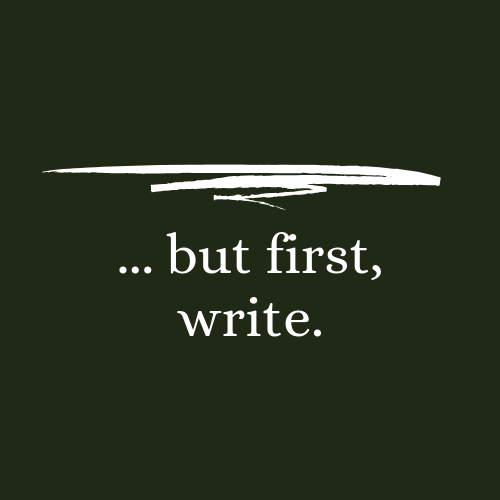
Oh! And for an extra shot of motivation, head over to the “… but first, WRITE” page for a t-shirt or a sticker! More on that in the next post, too. Join the movement!
September 30, 2019
The Magic of Transition
We moved. Again.
In 13 years of marriage, we can count the number of roofs we’ve lived under and number of states we’ve lived in like tallying up points in a game: the mint green 90-year-old house that was converted to 2 apartments (we lived in the small upstairs one); the cookie-cutter apartment next to a suburban beltway; a duplex on 88th Terrace and another duplex two doors down; the ranch style home on Twin Ridge Drive (we brought our first baby home there); the three-bedroom house with the French doors on Sunrise Street (we brought our second baby home there); a cheap and wide open subdivision home in a sleepy rural community; the 94-year-old brick home inside the limits of a major city (the first home we actually purchased).
Indiana. Kansas. Nebraska. California. Missouri.

Now, we are in a new home – another ranch, with an
add-on and the original house plans of a former owner who kept meticulous
records. We are in a new place – the Black Hills of South Dakota, where we showed
up knowing no one and where life is different in almost every way.
I used to think our story was unique. So many moves in
such a short span of time. So much change, so little permanence. People would
shake their heads and oohh and ahh over the many moves our family
endured since Bryan and I were married in 2006. But the more people I
encountered, the more I began to realize that they, too, had experienced change
in amazing doses – moves, roles, life events. Even my parents, who had lived in
the same house on the same street in the same town for 30+ years – eventually
moved, challenging my mom to think hard about how much home was really
tied to one specific place.
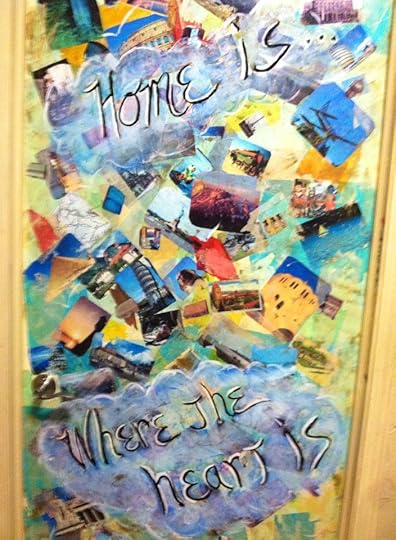
If you think broadly about the word transition, our
family is certainly not special. Transition happens every day, to everyone. Sometimes
it’s easy. Spring turns into summer. A child outgrows a pair of jeans.
Sometimes it’s hard. You say a goodbye that contains
no right words. You leave a comfort zone for an entirely new place – a new
house, a new job, a new community of people.
When our family left St. Louis in June bound for our new home where my husband would start his new job as pastor – a job he’s been working toward for the better part of a decade – our road was paved with frustration and tears. Goodbyes were hard. The miles were long. We had no idea what “the daily grind” would look like in western South Dakota.
But the journey also brimmed with excitement. What
would our new home look like? Who would we meet in this new place? How would
“the norm” here, less than 60 miles from the Wyoming border, compare to “the
norm” in St. Louis, whose metropolitan population is greater than the entire
state of South Dakota?
The magic of transition, for me, is that it is at once
terrifying and electrifying. You move into an unknown; you walk away from the
familiar. What’s more, transition is inevitable.
You and I both know: Change is all around us, all the
time. To paraphrase the Greek philosopher Heraclitus, the only thing constant
is change.
Because of that, we cannot fear change. If we do,
we’ll be living in fear our whole lives. Rather, we should expect change. That’s
not to say we can’t cherish what we have or mourn what we no longer have:
friends across the street, an old family tradition, youth. The magic of
transition is that you don’t know when the next change is coming. Because you
don’t know, the best thing you can do is to cherish and honor what you’ve got, today.
One of the biggest lessons Bryan and I have learned in
our years of moving and uprooting is to bloom, no matter what. We learned to
take root where we could and be there. That meant hanging pictures on
walls (no matter how long we thought we’d be under a certain roof). It meant
getting involved in the community, no matter how long we would call that
community ours. Perhaps most importantly, it meant going deep with people, not
being afraid to cultivate relationships even knowing that those relationships
might not last forever.

Here, in Rapid City, South Dakota, in the church where
we now belong and in the greater community of 70,000 people, we are trying to
do just that. We have come through another major transition and have emerged,
ready to plant strong roots. I dream of making this new place our
forever home.
Yet, there are no guarantees. In a robust reflection on change, David F. K. Mpanga wrote, “Do not tie your whole being to things that are bound to change.”
That means I can’t stake my whole being on where I
live – because I might not be here forever. It means I can’t stake my whole
being on my role as a parent – because one day, our kids (who rely on us for a
lot right now) will be grown and gone, real, thinking people who are making
their own moves on the world. It means I can’t stake my whole being on what I
do as a writer and editor – because the industry is in constant (you guessed
it) change and nothing is ever certain.
But it doesn’t mean we can’t live right where are, in
whatever geographical place, home, role or profession we’re in, with total
commitment. Today, this day, I will love my neighbor. I will tend to and
love my kids. I will write.
I am at work on a book that chronicles the challenges
and the joys of women who transition with their husbands through Seminary and
into their husband’s first pastoral call. As women in this season, we do not
lead; we follow. One wife at the Seminary put it this way: “In everything we do
here, we have to have an open hand.”
To hold up a cliché, bloom where you’re planted. But
at the same time, grab hold of each day with an open hand.
*What have been most meaningful transitions in your life?
March 6, 2019
A Spring Break Bucket List
As I write, the temperature gauge reads 14 degrees, and the KMOX station tells me it feels like one below outside. “Spring Ahead” for Daylight Savings Time is in 5 days. I can feel people’s waning patience, their annoyance that winter keeps hanging on.
Spring. Heh.
Yet, for many of us, Spring Break is just around the corner. It’s hard to contemplate sunshine and warmer days when we are still bundling up in winter coats and using the stair railings to mind the ice. Just this morning, our two boys marveled at the small prison of icicles that connected one stair to another on our back deck.
But still, one can always dream. There WILL be warmer days ahead.
A few years ago, the principal at my children’s school included a Spring Break bucket list on the front page of the weekly school newsletter, courtesy of notimeforflashcards.com. I have modified the original list slightly, and added a few activities from my family’s bucket list. What I love: these ideas are simple, and most of them can happen anywhere.
Spring Break Bucket List
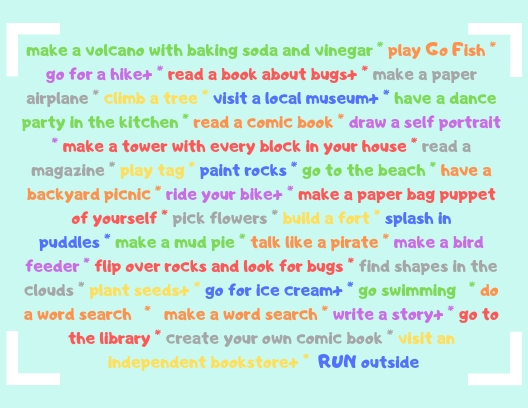
+go for a hike – In St. Louis, where we live, Castlewood State Park boasts some of the most fantastic trails and views you could ask for in the metro area. And that’s a bonus: You don’t have to leave the metro to experience this amazing slice of nature.
+read a book about bugs – Check out The Icky Bug Alphabet Book and the Icky Bug Counting Book by Jerry Pallotta.
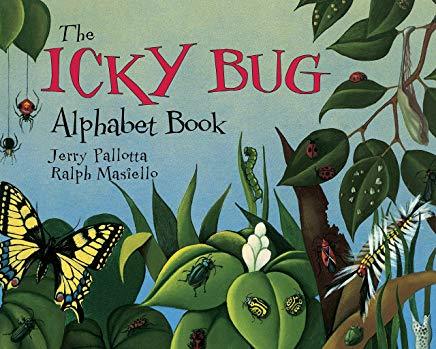
+visit a local museum – in St. Louis, where we live, the Science Museum, History Museum and Art Museum are free. The World Chess Hall of Fame is worth the money, if your family likes chess. The Museum of Westward Expansion on the St. Louis Arch grounds is newly renovated. The Museum of Transportation is always a favorite – our boys beat us to it, visiting on class field trips well before my husband or I set foot there.
+ride your bike – The Route 66 State Park has wide, paved trails perfect for training wheels and young learners.
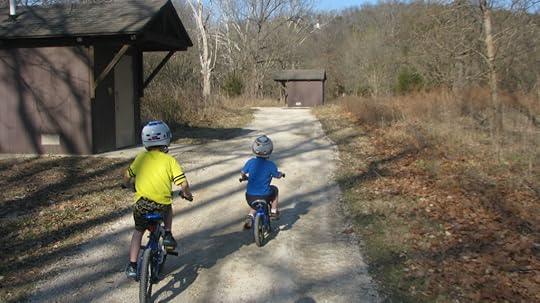
+plant seeds – Did you know the city of St. Louis provides free annual flower seedlings for planting on public property? The city also provides hand tools (brooms, rakes, shovels), trash bags and recycling carts to residents who take on the Brightside St. Louis challenge to clean up and beautify city neighborhoods. Learn more at BrightsideSTL.org.
+go for ice cream – St. Louis certainly boasts its favorite stops for ice cream, but a newer little shop you may not have heard of is Sweet Ems in Dogtown. Owners and sisters Erika Darrough and Megan Cobb rotate ice cream flavors regularly, with 10 flavors offered at any given time. Sweet Ems will celebrate its one-year anniversary in April. Read the feature in Feast Magazine here.
+write a story – When I was 10, my high school cousin made me a writing binder. He knew I loved to write stories, and he did, too. His creation was simple: a white three-ring binder filled with loose leaf paper. He sketched a quick cover on an 8.5”x11” piece of paper and stuck it in the plastic sleeve on the front of the binder. In big block letters, it read, “KATIE’S STORIES.” I filled that binder with stories that tumbled from my imagination. Today, I could tell you exactly where that binder is and what’s in it. You can nurture the writer, artist or creative thinker in your family the same way.
+visit an independent bookstore – Check out Bookhouse in Maplewood, The Novel Neighbor in Webster Groves, or Left Bank Books in the Central West End.
As you plan for Spring Break, which of these activities have
you done? What do you remember doing as a child? Which of these would be on
your bucket list? Your child’s bucket list? What is not listed here that is on
your bucket list, or that you would recommend every family experience at least
once?
As we wait for sunshine to pour forth and rid the sidewalks and back steps of all things ice, I am sitting at my desk cozied up in a blanket, dreaming. These dreams are not complex or enormous. They are simple: sweet moments with my kiddos in their week off of school. Spring Break is just around the corner. How will you spend it?
November 19, 2017
One Way to Turn Mayhem into Change: Write Your Story
The excellent editorial that appeared on Sept. 18 issue of the St. Louis Post-Dispatch points to the lack of a clear, defined purpose in the city’s protests since Jason Stockley was acquitted of murder charges on Sept. 15. The rage and the emotion fueling the protests are understandable to a degree, but when I read about windows of the St. Louis Public Library’s Schlafly branch being smashed in and books being pulled off the shelves, I have to wonder if protesters even understand themselves what exactly they are doing.
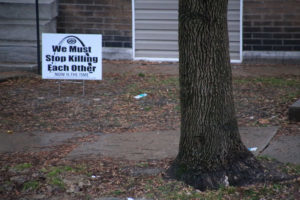
Photo courtesy of Creative Commons
My family moved to St. Louis in mid-2015, in the wake of the Ferguson uprising and as the “Black Lives Matter” movement was gaining traction. From a hotel room in St. Louis, I remember seeing a news report about a local sign manufacturer who was churning out signs that read STOP KILLING EACH OTHER. He could not make enough signs to keep up with demand. I remember sinking to the floor in anguish. What are we doing, moving to a place where “STOP KILLING EACH OTHER” signs can’t be made fast enough? I asked myself.
Fast forward to the present. The Post-Dispatch editorial staff wrote on Sept. 18: “Property destruction aside, randomly shutting down businesses and delaying motorists from getting to their destinations definitely adds to discomfort levels. Wrecking the economy, however, will only lead to greater unemployment, poverty and business flight. It’ll make life even harder for people struggling on the margins.”
As the editorial staff pleads with protesters to outline how community leaders can be part of the solution to injustice, I propose one step toward community conversation and protesters defining their goals: Write about your experience. Explore your emotions (rage, confusion, sadness, etc.) and your role on the page. Protesters: Ask yourself what you hope to gain in marching through the city’s streets. Citizens of the community: Ask yourself what you might contribute to a conversation about race, injustice, the wildly diverse understandings of police officers’ roles in our city.
Further, I propose we create a space conducive to writing about our collective experiences and exploring the tough questions. I envision a writing workshop at a public library, the very institution that puts a world of knowledge at the fingertips of every person in America, for free, where participants across racial, economic and educational spectrums can safely explore their place in our city’s painfully fractured landscape.

Photo courtesy of Creative Commons
John F. Kennedy, a champion behind the Civil Rights movement, once said that “libraries should be open to all, except the censor. We must know all the facts and hear all the alternatives and listen to all the criticisms.”
Around our neighborhoods, new signs are popping up. They contain a lot of colorful words and it’s hard to read the entire sign from the driver’s seat of a car, but the final three words are: “Kindness above all.”
The Post-Dispatch poignantly called out the unsavory irony of the protesters’ mayhem on Sept. 18: “Shutting down concerts and blocking commerce definitely serves the protesters’ stated purpose of disrupting. But it risks penalizing those who aren’t necessarily the enemy. If anyone is more symbolic of uplifting the poor and oppressed around the world, it’s Bono of the rock group U2, whose concert had to be canceled because of the weekend protests.”
Let’s consider “Kindness above all.” Let’s get to the root of our own experiences, and what drives our thoughts, actions and responses toward others.
A healthy protest is an invitation for dialogue. Writing, at its most basic level, is communication. Writing to explore your experience, emotions, role in an enormous struggle that pans our city and our nation could well be the beginning of clear path to action.
Over and over throughout history, writing has served as a key to understanding.
Without words on a page, libraries would not exist. Neither would countless discoveries, breakthroughs in science, biographies, personal narratives.
Anger is not a roadmap to change. But words that are thoughtful, honest, from the heart, can change everything.
*This post originally appeared as a guest column on the St. Louis Post Dispatch website.
June 20, 2016
7 Ways to Help Orlando
For a week I’ve been struggling to process the horrific events that played out at The Pulse Night Club in Orlando. I’ve written about it. I’ve deleted what I’ve written. I’ve prayed, and I’ve prayed some more. No doubt the shooting that left 50 people dead and another 50+ injured is couched in some deeply personal and deeply political issues. Gun violence. The second amendment. Respect toward the LGBT community. I could write a scathing post that stares down these issues and stirs up my readers – for good or otherwise. But then I would be just another loud voice among the cacophony of voices out there who all believe their opinions are in the best interest of our country.
I write as a Christian, a strong believer in the grace and love of Jesus Christ. And when it comes right down to it, the tragedy that unfolded at The Pulse last week is about people. Human beings who had their lives ripped out from under them.

Photo courtesy of www.creativecommons.org
Orlando, you’re in our thoughts and prayers.
How many people have said or thought something along these lines over the past 9 days? I know I have. Yet, as the horrifying news continued to unfold from nightclub – 20 reported dead, then 50, with many more critically hurt – that familiar, uncomfortable restlessness began to stir in me.
This is a restlessness I feel every time a national tragedy strikes. While families are devastated by the unexpected news that someone they loved was a victim of senseless violence, my day-to-day life goes on. Still, I eat breakfast and lunch and dinner, fret over the mounds of housework to be done, go to the office, juggle heavy workloads, watch a favorite show.
I pray, and my life goes on.
I was so moved by a Facebook post this week from a dear friend of mine from college. Jesus, she pointed out, didn’t just pray. He acted. He immersed himself in the front lines. He was in the middle of the mess. He felt people’s tears on his skin. He stared down death and pain and desperation.
“He got his hands dirty and his heart broken,” my friend wrote. He was there.
Not everyone can hop a plane and descend on the mass pain and sorrow that is continuing to unfold in Orlando. But we can respond in other ways.
Do not be overcome by evil, but overcome evil with good. (Romans 12:21)
Here are 7 ways to help Orlando:
Give blood.
In the hours following the Orlando mass shooting, hundreds of Orlando residents lined up to give blood. So many people turned out that OneBlood, an Orlando blood center, reported that the blood supply had been replenished in record time.
But even if you don’t live in Orlando, your blood donation helps ensure blood supply throughout the year. It could help one individual in need, or it could be part of the supply that aids in the next national tragedy. In a compelling article, The Gospel Coalition’s Joe Carter writes: “Even if we don’t live in the Orlando area, this event can remind us that daily tragedies occur and blood donations are always needed in your community.”
Fight hate with love.

Photo courtesy of www.creativecommons.org
How can you show love to one person today? Use the Orlando tragedy as a catalyst to live more intentionally for others. Perform random acts of kindness. Love your neighbor as yourself. It’s easy to love people who we know well and with whom we share similarities. But what about the homeless man on the street corner? The single dad next door? The house full of wild teenagers in your neighborhood? “ Loving those who are different is not easy,” writes author Angela Price. “It’s a sacrifice, but Jesus did it for us. When he came to rescue us, we were all lost in sin. We were ‘risky’ for him, even to the point of crucifixion. Yet he entered into a world filled with filth, and willingly laid down his life in love. This is how we share Christ with those desperate for saving grace.”
Educate yourself about gun control and gun violence
Seek factual information about our nation’s heated gun control debate. Don’t just sign the next petition calling for this or that. Don’t blindly follow. Get the facts, and then write to your representatives calling for support and action.
Join discussions and find facts:
http://www.debate.org/opinions/what-are-the-pros-yes-and-cons-no-of-gun-control
http://gun-control.procon.org/
Give financially.
Pledge any amount to the American Red Cross here.
Your donation can help central Florida, or help the ARC prepare for the next disaster. Not surprisingly, many organizations are calling for donations in the wake of the Orlando tragedy. Give with discretion with the help of sites like CharityNavigator, a site that scrutinizes how efficiently charities use donated funds and rates them accordingly; and Guidestar.org, which aims to provide organizational transparency and governance. According to www.money.com, experts recommend sticking with groups that limit their overhead expenses to less than 20% of their budget. Never donate money via Facebook or Twitter directly.
5. Take a CPR class.
Better prepare yourself to be proactive in the face of crisis. Sign up for a class in your area .
6. Choose a cause and commit to it.
Our nation is embroiled in so many social and political issues, it is impossible to be an effective voice on every one of them. Use the fiery conversations on issues arising from The Pulse shooting as motivation to identify one cause for which you’ll be an active, assertive voice. Gun control and gun violence. Immigration. Poverty. Then, arm yourself with facts and personal stories to support your stance. In everything, respond in love.
7. Write a letter
Perform a Google search for churches or counseling centers in Orlando. Choose one or two – or five or 10 – and write to them. Share your sorrow. Tell them you are praying for them and then follow through. Ask how you can support or show love from afar. Consider launch a letter-writing campaign with a group of friends to reach even more people in the Orlando area.
In the wake of the devastation coming out of Orlando, our lives will go on. But perhaps, as the numbers of tragedies and senseless deaths continue to climb, we can act in our own day-to-day lives with more intention, more focus on others and less on ourselves. Perhaps we can, as my friend so graciously called to attention, be the change we wish to see in the world.
January 19, 2015
Micro Essay, “Thunderstorms,” in River Teeth today!
I am so humbled and excited to report that my micro essay, “Thunderstorms,” was published today in River Teeth: A Journal of  Nonfiction Narrative. “Thunderstorms” is this week’s “Beautiful Thing.” River Teeth describes its “Beautiful Things” column this way:
Nonfiction Narrative. “Thunderstorms” is this week’s “Beautiful Thing.” River Teeth describes its “Beautiful Things” column this way:
“Glimpses, glimmers, meditations, moments, reflections, refractions, interrupted shadows, river shimmers, darkened mirrors, keyholes, kaleidoscopes, earring hoops, slabs of cracked granite, cracks where the light gets in. Beautiful things.
… ‘Beautiful Things’ features very brief nonfiction that finds beauty in the every day.”
As a writer who is constantly seeking to tell real life stories and help others tell their own stories, I am warmed to the core to be able to share this teensy piece with my readers. You can read it here. It takes less than a minute.
In the words of Garrison Keillor, Be well, do good work, and keep in touch. XO.
January 9, 2015
What’s Your “RE” Word?
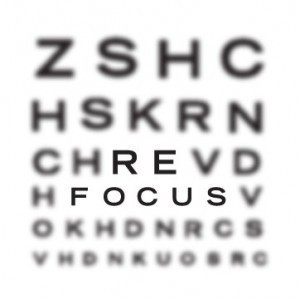 Renew. Revisit. Refocus. Refresh. Re-see. Restart. Redo. Resolve.
Renew. Revisit. Refocus. Refresh. Re-see. Restart. Redo. Resolve.
Our language is full of “re” words. As a bone-cold January pushes full steam ahead, what’s your “re” word?
While I can’t speak for individuals’ own words, I can tell you with utter excitement about a group that showed up in the hearth room of Bethany Lutheran Church this week, each of them ready to buckle down to the serious business of writing.
They came from varied backgrounds, from various parts of the city. Some were deep into writing projects; others were just on the cusp of starting something. But they all showed up with two things in common: a love for the written word and a humble desire to support and be supported by one another.
Welcome to the Kansas City Writers’ Salon.
It is no accident that it is in this season of “RE” (refocus, renew, etc.) that I am launching a new Kansas-City-based writer’s group. The group is a spin-off of the creative nonfiction classes I have been teaching at The Writer’s Place in Kansas City. But in this group there are no genre boundaries. Our aim is good writing, what that means, and how to get there.
The Kansas City Writers’ Salon will be a gathering place for writers to focus on craft, critiques and community. Backed by a growing interest of Kansas City-based writers, the group aims to establish an ongoing conversation about the struggles and joys, the failures and successes of writing. The Writers’ Salon will be a space for writers to continually gather, talk about the craft of writing and share works in progress with one another.
We kicked off the group this week, with a discussion about starting points. More specifically, how do you put your butt in the chair and get down to the gritty work of actually writing?

Overland Park Arboretum, 2013. Kate Meadows
One group member admitted that it takes her a long time to get going. “It’s a matter of a little toe dip in the ocean,” she said, on the challenge of getting started.
We talked about writing as a form of play (not work) – a mind trick of sorts you can play on yourself to help get yourself going. You show up to play. You show up to dance on the page.
Stephen King said, “Writing is at its best – always, always, always – when it is a kind of inspired play for the writer.” (On Writing)
Julia Cameron, author of The Artist’s Way, writes: “Art is imagination at play in the field of time. Let yourself play.”
As the New Year gets into full swing, what’s your “Re” word?
I invite you to join us, Tuesdays from 4-5:30 p.m., in the Hearth Room at Bethany Lutheran Church (Overland Park, KS), to encounter the possibilities.



